ACP
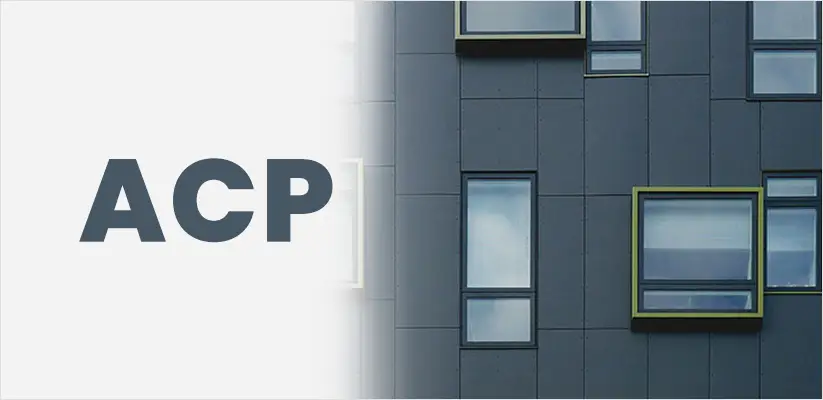
Introduction de l'ACP
ACP est l'acronyme de Aluminum Composite Panel (panneau composite en aluminium). Il s'agit d'un type de panneau plat constitué de deux fines feuilles d'aluminium collées à un matériau central non aluminium. L'âme est généralement constituée d'un polyéthylène basse densité (LDPE) ou d'un matériau ignifuge (FR). Les feuilles d'aluminium sont généralement recouvertes d'une peinture protectrice, telle que le polyester ou le polyéthylène. PVDF (Fluorure de polyvinylidène).
Les tôles d'aluminium offrent une résistance aux intempéries et à la corrosion, ainsi qu'un attrait esthétique. Les panneaux peuvent être facilement coupés, pliés et façonnés pour s'adapter aux différentes exigences de conception.
Les panneaux composites en aluminium sont un choix populaire dans l'industrie de la construction en raison de leurs propriétés fonctionnelles et esthétiques, ce qui les rend adaptés à une large gamme d'applications.
Applications ACP
Le panneau composite aluminium est largement utilisé dans l'industrie de la construction pour sa légèreté, sa durabilité et sa polyvalence. Il offre une combinaison de rigidité, de résistance et de facilité d'installation. Les panneaux composites en aluminium sont couramment utilisés pour le revêtement extérieur des bâtiments, la signalisation, la décoration intérieure et diverses applications architecturales.
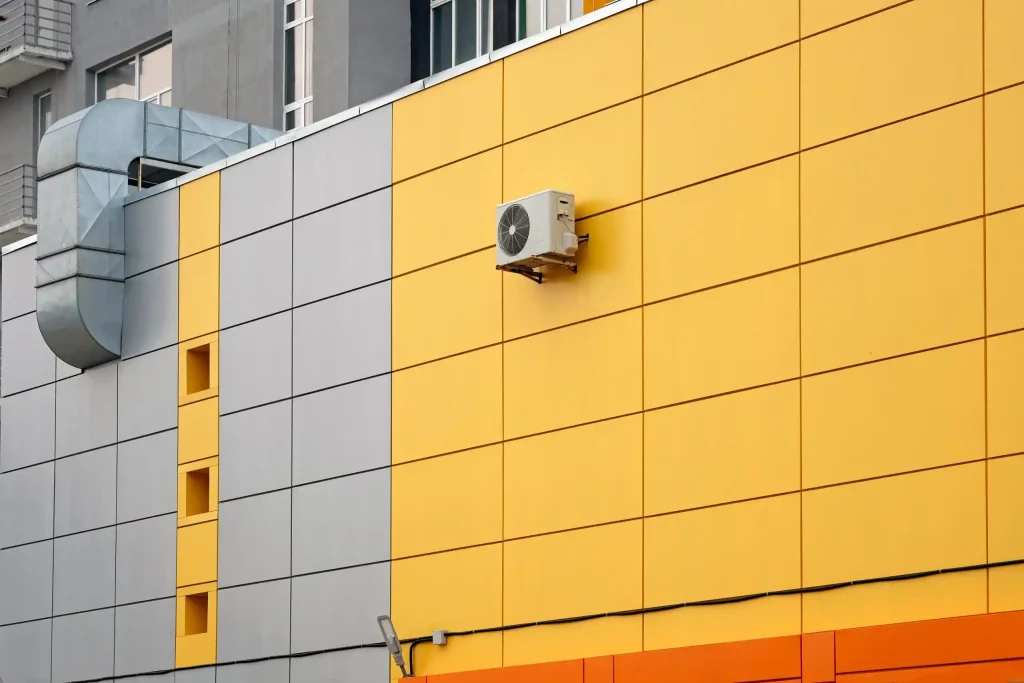
Le processus de construction ACP
Un panneau composite en aluminium est construit en collant le matériau de base entre des feuilles d'aluminium. Ce processus de collage est généralement réalisé en appliquant de la chaleur et de la pression avec un adhésif ou en appliquant de l'adhésif sur les feuilles d'aluminium par un processus connu sous le nom de "coil coating" avant le laminage. Il s'agit là d'un aperçu des étapes de la création d'un panneau composite en aluminium :
1. préparation des tôles d'aluminium : Pour garantir une bonne adhérence au matériau de base, les tôles minces d'aluminium doivent d'abord être nettoyées, dégraissées et traitées en surface. Les tôles sont généralement fabriquées à partir d'alliages d'aluminium de première qualité qui résistent à la corrosion.
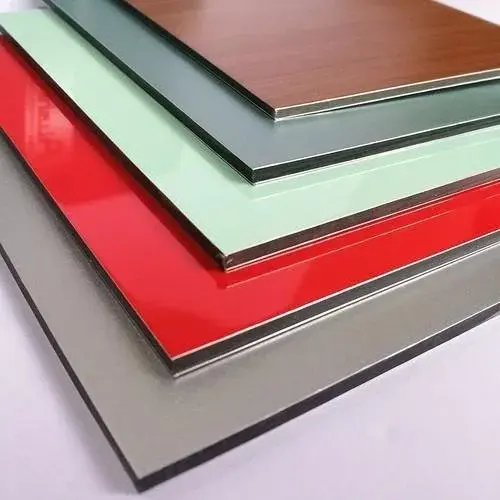
2. Préparation du matériau de base : Les techniques d'extrusion ou de laminage sont utilisées pour préparer le matériau d'âme, qui est généralement un matériau ignifuge (FR) ou du polyéthylène basse densité (LDPE). Le matériau d'âme du panneau composite aluminium lui confère son intégrité structurelle, son isolation et son insonorisation.
3. Processus de collage : Un procédé de collage est utilisé pour assembler les tôles d'aluminium et le matériau de base. Un adhésif spécial - souvent un film adhésif à haute résistance - est appliqué sur les deux faces du matériau de base. Ensuite, le matériau de base revêtu d'adhésif est pressé sur les feuilles d'aluminium préparées.
4. Application de la pression et de la chaleur : la structure sandwich ACP assemblée est soumise à la pression et à la chaleur afin d'assurer une bonne adhérence. En général, ce processus est réalisé dans une presse à chaud dont la température et la pression sont contrôlées avec précision afin d'obtenir la meilleure adhérence entre les couches.
5. Découpage et coupe : Les panneaux composites en aluminium sont découpés et coupés aux dimensions et formes appropriées après avoir été collés et refroidis. Des machines ou des outils de coupe spécialisés sont généralement utilisés à cet effet.
6. Traitement de surface et finition : une peinture de protection, telle que le polyester ou le PVDF (polyfluorure de vinylidène), est appliquée sur les surfaces en aluminium du panneau composite en aluminium. Ce revêtement rend les panneaux résistants aux intempéries, durables et esthétiques. Des techniques de laminage, de pulvérisation ou de revêtement en bobine peuvent être utilisées au cours du processus de revêtement.
7. Contrôle de la qualité et inspection : Pour garantir que les tôles d'ACP répondent aux normes et spécifications nécessaires, les fabricants de tôles d'aluminium appliquent des procédures strictes de contrôle de la qualité. Il s'agit d'examiner l'intégrité générale du panneau, la précision des dimensions, la finition de la surface et le collage.
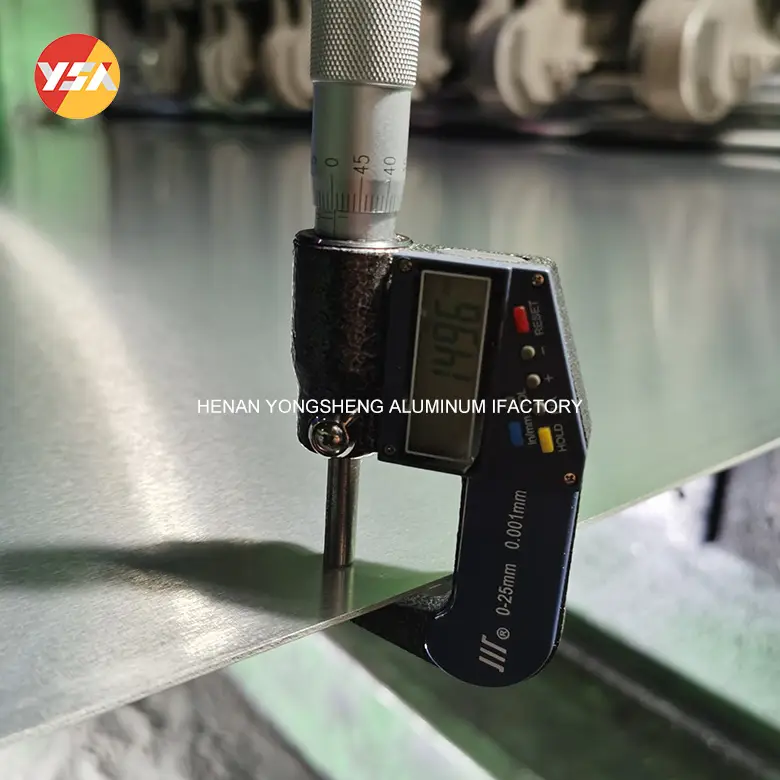
Avantages des tôles d'aluminium dans les panneaux composites en aluminium
1. Léger : L'aluminium étant un matériau léger, la manipulation et l'installation des panneaux composites en aluminium sont facilitées. Cela facilite la manutention et le transport de la structure du bâtiment et réduit son poids total.
2. Haute résistance : Malgré sa légèreté, l'aluminium présente un excellent rapport résistance/poids. Comme l'ACP utilise des feuilles d'aluminium, les panneaux ont une résistance structurelle et une rigidité qui les rendent appropriés pour une variété d'utilisations, y compris le revêtement extérieur.
3. Résistance aux intempéries : L'aluminium est très résistant à la rouille et aux intempéries. En général, des finitions protectrices telles que le polyester ou le PVDF sont appliquées aux tôles d'aluminium utilisées dans les panneaux composites en aluminium, ce qui renforce leur résistance aux intempéries. De ce fait, les panneaux composites en aluminium peuvent résister à une exposition à divers facteurs environnementaux difficiles, tels que les rayons UV, l'humidité et les fluctuations de température, sans subir de dégradation notable.
4. L'attrait esthétique : L'aspect élégant et contemporain des tôles d'aluminium en ACP améliore l'attrait visuel des bâtiments. Les panneaux permettent une multitude de possibilités de conception et de personnalisation car ils peuvent être produits dans une large gamme de couleurs, de finitions et de motifs.
5. Durabilité : L'aluminium est un matériau durable et robuste. La durabilité et la résistance à l'abrasion des tôles d'aluminium utilisées pour fabriquer les panneaux composites en aluminium sont bien connues. Même dans des conditions difficiles, elles conservent leur intégrité structurelle et leur beauté.
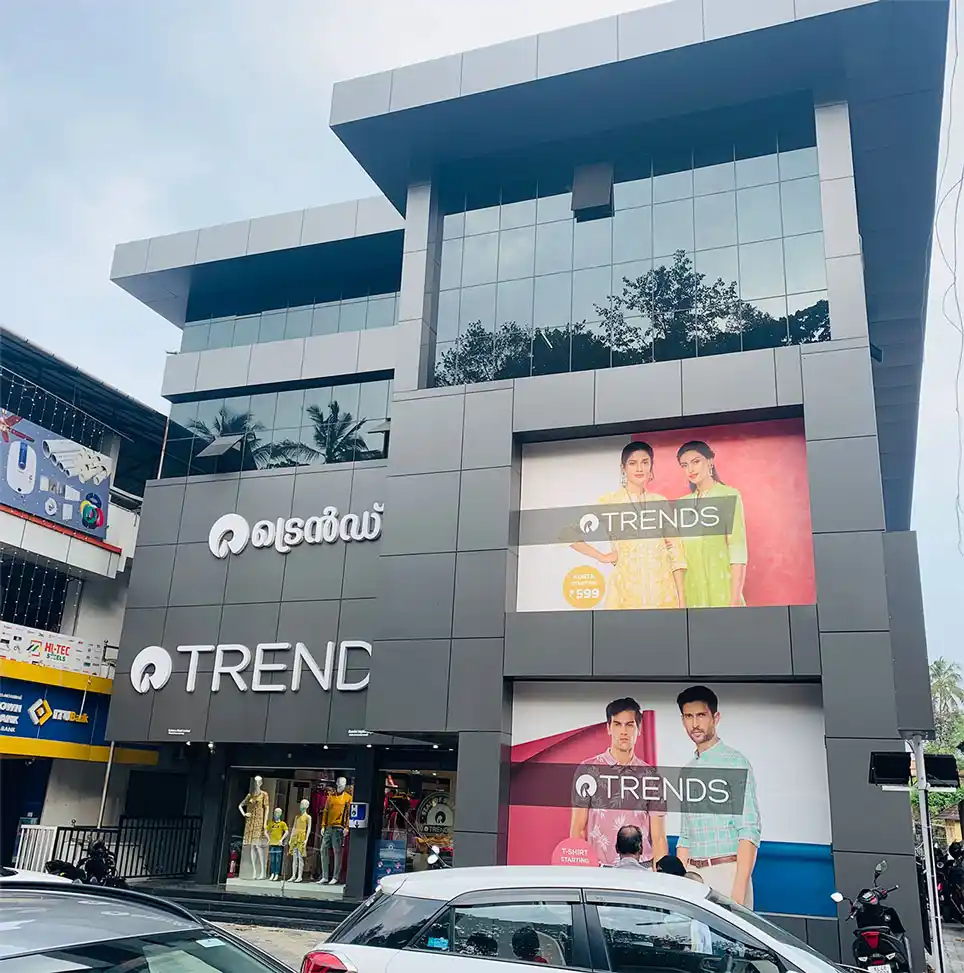
6. Facilité d'entretien : Les panneaux composites en aluminium avec des feuilles d'aluminium nécessitent un minimum d'entretien. La surface lisse et non poreuse de l'aluminium facilite le nettoyage et l'entretien. Un nettoyage de routine avec des détergents doux et de l'eau suffit généralement pour que les panneaux conservent leur aspect neuf.
7. Résistance au feu : L'aluminium possède des propriétés inhérentes de résistance au feu, et les panneaux composites en aluminium avec des noyaux résistants au feu offrent une meilleure performance au feu. Ils conviennent donc à une utilisation dans les bâtiments où la sécurité incendie est une préoccupation.
8. Polyvalence : Les panneaux composites en aluminium et les tôles d'aluminium sont très polyvalents et peuvent être utilisés dans diverses applications architecturales. Ils peuvent être facilement coupés, façonnés et formés pour répondre à des exigences de conception spécifiques, ce qui permet de concevoir des bâtiments créatifs et innovants.
Dans l'ensemble, l'utilisation de tôles d'aluminium dans les panneaux composites en aluminium permet d'obtenir un poids léger, une résistance élevée, une résistance aux intempéries, un attrait esthétique, une durabilité, une facilité d'entretien, une résistance au feu et une polyvalence, ce qui fait des panneaux composites en aluminium un choix populaire dans l'industrie de la construction.
Feuilles d'aluminium Yongsheng
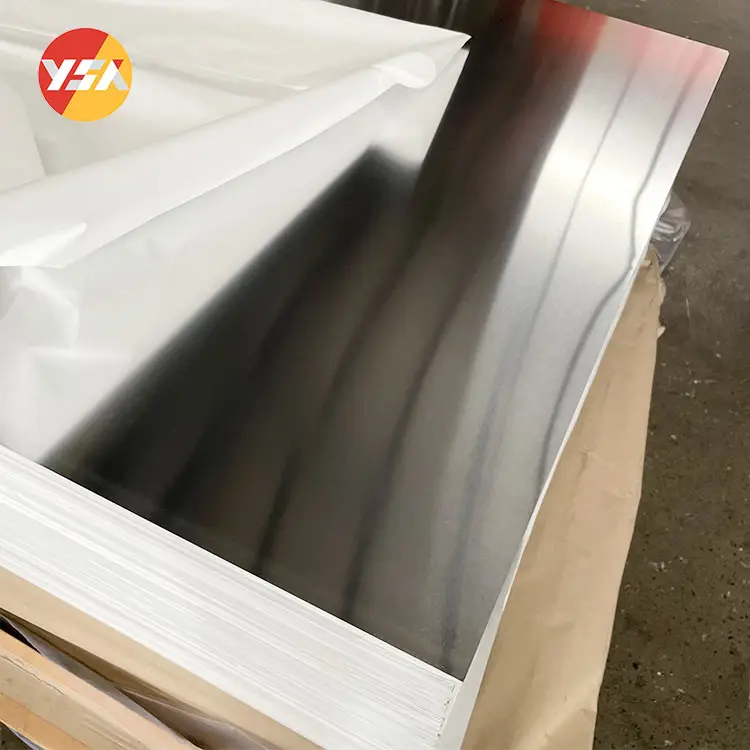
L'ACP est généralement utilisé pour la construction et la signalisation. Tôles d'aluminium 1100 sont principalement utilisés pour les murs extérieurs des bâtiments, et 3003/Tôles d'aluminium 5052 est utilisé pour les exigences de résistance élevées. Les panneaux sont généralement fabriqués en Aluminium 1xxx. Les feuilles gaufrées sont parfois utilisées pour la décoration, et s'il y a des exigences en matière de couleurs, nous pouvons les choisir. tôles d'aluminium revêtues d'une couche de couleur ou même tôles d'aluminium à grain de bois.
Les tôles d'aluminium peuvent être personnalisées pour s'adapter aux dimensions et aux exigences spécifiques de l'ACP.
Les spécifications et les caractéristiques des ACP peuvent varier en fonction du fabricant et du produit spécifique. Lors du choix, il est conseillé de consulter un professionnel pour s'assurer qu'ils répondent à vos besoins.
Feuilles d'aluminium :
Alliage d'aluminium : 1000, 3000, 5000, 6000aluminium, etc.
Température : O-H112, T3-T8, etc.
Traitement de surface : Finition en usine, revêtement, anodisation, miroir, gaufrage, quadrillage, 15 barres, etc.
Épaisseur : 0,2 mm500 mm
Largeur : 100 mm2600 mm
Length: Any length, according to the transportation, usually less than 12m.
Surface Treatment: Mill finish, color coated, anodized, embossed, polished mirror aluminum, etc.
Application:ACP outer layer, roofing, ceiling, cladding, gutter, facade wall, etc.
Packaging: Seaworthy wooden pallet, wooden case, aluminum sheet case.
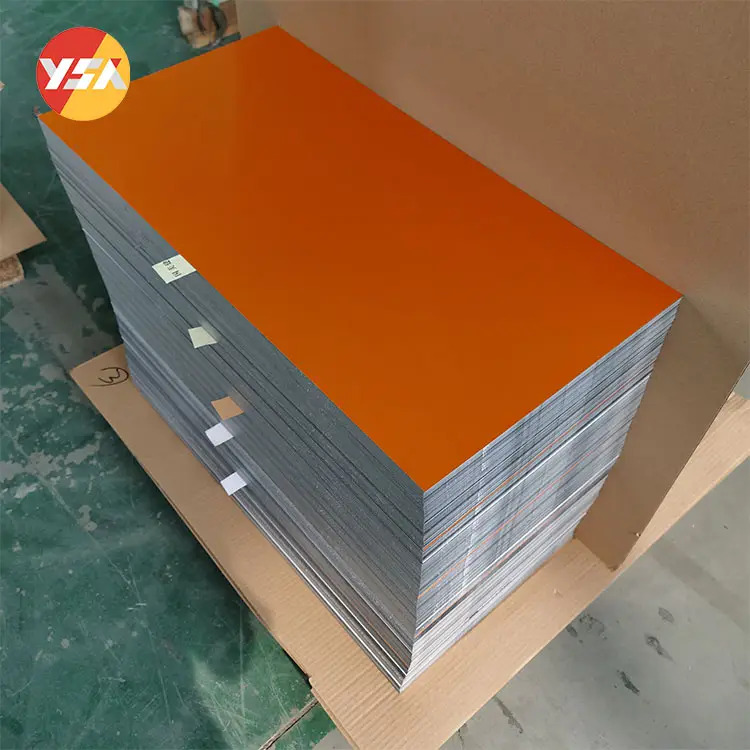
Henan Yongsheng Aluminum Co., Ltd. is located in the industrial cluster of Gongyi City, Henan Province. Our factory focuses on the production and development of aluminum products such as aluminum sheet/coil, aluminum foil, aluminum strip, color coated aluminum sheet/coil, aluminum circle, embossed aluminum, aluminum checker sheet, mirror aluminum sheets, antiskid aluminum sheet and so on.
The factory covers an area of 10,000 square meters and has 276 employees. All our products are independently produced to provide you with excellent service with fast delivery, high-quality assurance, factory prices, and professional customer service staff. You are welcome to visit the factory and look forward to establishing a long-term good business relationship with you.
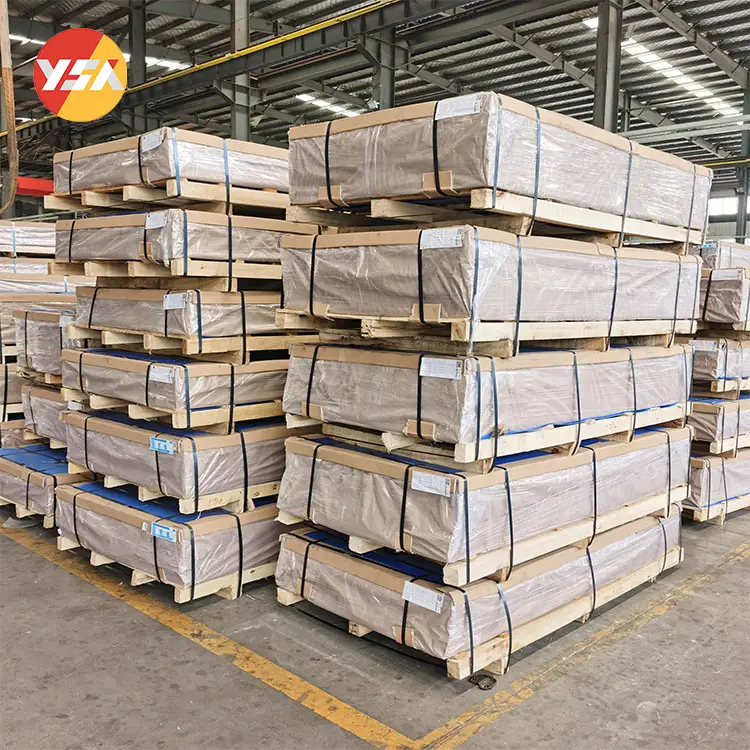
Regular Maintenance for ACP
Regular maintenance for Aluminum Composite Panels (ACP) can help ensure their longevity and preserve their aesthetic appearance. Here are some general maintenance tips for Aluminum composite panels:
1. Regular Cleaning: Clean the Aluminum composite panel periodically to remove dust, dirt, and other debris that may accumulate on the surface. Use a soft cloth or sponge, along with mild soap or detergent mixed with water, to gently wash the panels. Avoid using abrasive cleaners or harsh chemicals that can damage the protective coating.
2. Rinse with Water: After cleaning, rinse the panels thoroughly with clean water to remove any soap residue. This helps prevent streaking and ensures a clean finish.
3. Inspect for Damage: Regularly inspect the Aluminum composite panel for any signs of damage, such as dents, scratches, or chipping of the protective coating. If any damage is found, it should be repaired promptly to prevent further deterioration and maintain the panel’s integrity.
4. Avoid Abrasive Materials: Do not use abrasive materials, harsh brushes, or abrasive cleaning pads on the Aluminum composite panel, as they can scratch or damage the surface. Stick to soft cloths, sponges, or nonabrasive cleaning tools.
5. Avoid High-Pressure Washing: While Aluminum composite panels are generally resistant to water, it is advisable to avoid high-pressure washing, as it may force water into panel joints or damage the protective coating. Use a gentle water stream or low pressure washing if necessary.
6. Check Sealants and Joints: Inspect the sealants and joints between the Aluminum composite panel regularly. Ensure that they are intact and properly sealed. Any damaged or deteriorated sealants should be repaired or replaced promptly to maintain the panel’s weather resistance and prevent water infiltration.
7. Avoid Chemical Exposure: Avoid exposing the Aluminum composite panel to strong chemicals, solvents, or abrasive substances, as they can damage the protective coating. If any chemical spills occur on the panels, clean them immediately with water.
8. Follow Manufacturer’s Guidelines: Always follow the manufacturer’s guidelines and recommendations for cleaning and maintenance specific to your Aluminum composite panel. Different types of ACPs may have specific care instructions, so it’s important to refer to the manufacturer’s instructions for the best practices.
FAQ: Any recommendations for repairing damaged aluminum composite panels?
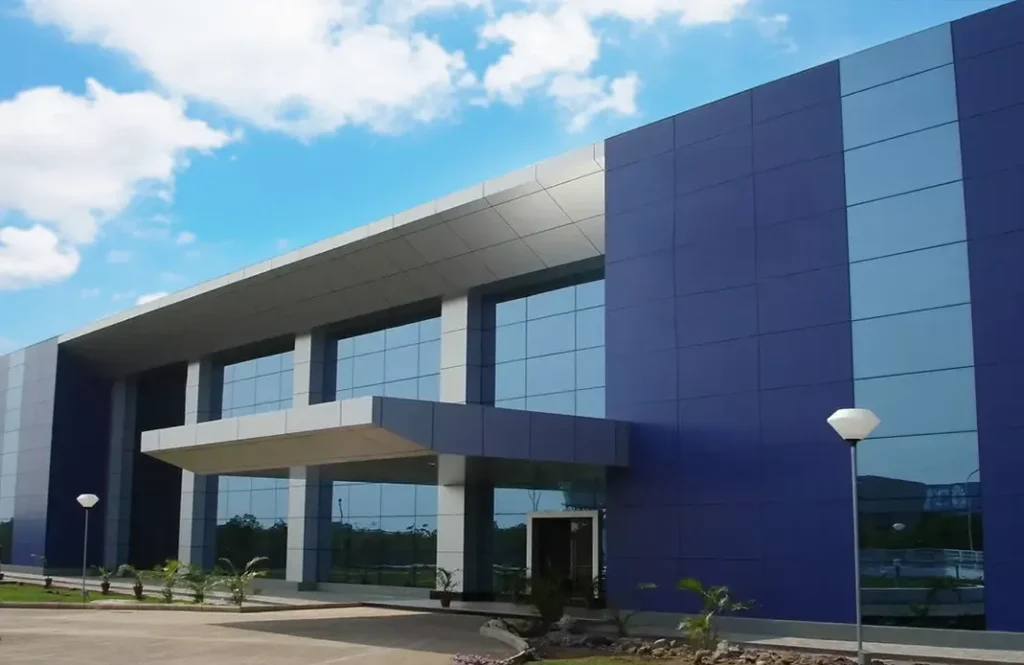
When it comes to repairing damaged Aluminum Composite Panels (ACP), the specific approach will depend on the nature and extent of the damage. Here are some general recommendations for repairing common types of damage to Aluminum composite panels:
1. Scratches and Minor Surface Damage:
For minor scratches or surface damage, you can try using a nonabrasive cleaner or a mild detergent mixed with water to gently clean the affected area. Rinse thoroughly with water and wipe dry.
If the scratches are deeper or more noticeable, you can apply a color-matched touchup paint or coating recommended by the ACP manufacturer. Follow the manufacturer’s instructions for application and drying time. This can help conceal the damage and restore the panel’s appearance.
2. Dents and Deformation:
For small dents, you can try using a heat gun or hairdryer to apply gentle heat to the affected area. Heat the area evenly and use a soft cloth or gloved hand to carefully push and massage the dent back into shape. Be cautious not to overheat or damage the panel.
If the dent is larger or more severe, it may require professional repair or replacement of the affected panel. Contact the ACP manufacturer or a qualified professional for guidance and assistance.
3. Delamination or Peeling:
If there is delamination or peeling of the ACP panel layers, it is recommended to consult with the manufacturer or a professional installer for appropriate repair options. Delamination often requires specialized techniques and expertise to restore the panel’s structural integrity.
4. Sealant or Joint Repair:
If the sealants or joints between Aluminum composite panels are damaged or deteriorated, they should be repaired promptly to maintain weather resistance and prevent water infiltration. Remove any loose or damaged sealant and clean the area thoroughly. Apply a compatible sealant recommended by the ACP manufacturer, following their guidelines for proper application and curing. It’s important to note that the best approach for repairing Aluminum composite panels will vary based on the specific product, manufacturer recommendations, and the severity of the damage. Whenever possible, consult the ACP manufacturer or seek professional assistance for proper repair techniques and materials specific to your panels.


